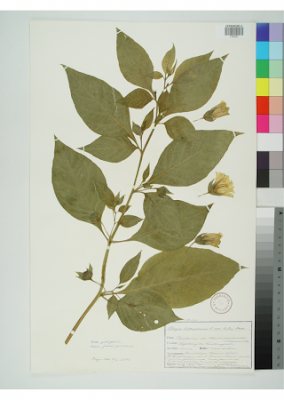The death cap is one of the most poisonous mushrooms
in the northern hemisphere. However, did you know that food prepared with a
death cap is extremely tasty?
 |
| Amanita phalloides; this image is under CC-BY-NC-SA of Danish Mycological Society in Europeana |
The death cap is
medium sized mushroom, with cap 7-15 cm in diameter. It grows throughout the
entire temperate zone of Europe, Asia and North Africa. It was carried
(probably with tree seedlings) to North America and Australia. This mushroom
grows from summer through fall in deciduous or mixed forests. The death cap is
responsible for most mushroom poisonings, and even small doses can be very
dangerous. Resistance to the poison varies among individuals, so specifying a
fatal dose is difficult. The poison - amanitin, damages the liver and kidneys.
 |
| Amanita phalloides by František Šaržík from EOL |
Initial symptoms
occur 8 to 48 hours after ingestion. In this phase, the person experiences
fatigue, stomach nausea, dizziness, headaches and feelings of cold, even
freezing. The nausea intensifies, stomach aches occur, accompanied by strong
retching and watery diarrhea, leading to dehydration, and eventual circulatory
failure. This is usually the immediate cause of death in children. If the
patient survives this phase, his condition appears to improve (usually the fourth
day after ingestion). In the second phase, the kidneys fail, and sometimes the
liver as well. Death usually occurs four to twelve days after ingestion.
Treatment of death cap poisoning involving infusions with a high concentration
of thioacetic acid was invented by the Czech doctor J. Herink.
 |
| Amantia from BHL |
You can find
more about death cap on BLE – Poisonous nature. Stay tuned to us!








